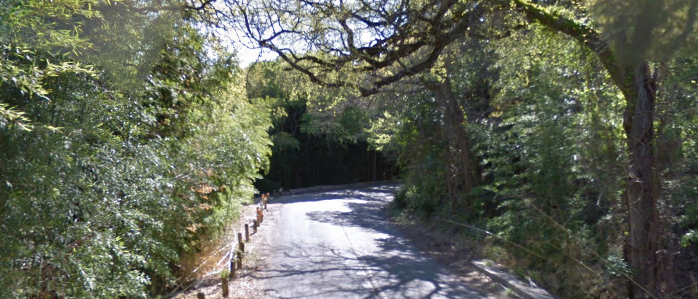About two years after moving to the Central Texas, I took a random day trip up to the city of Waco with a friend. Whilst travelling west along N. Valley Mills Dr., I suddenly found it difficult to breathe. I felt intense pressure and at the same time, the air seemed to contain less oxygen.
Conversely, my friend suddenly relaxed. She commented on how fresh the air felt- like a sea breeze. As we came over a rise, Lake Waco came into view. Normally, near a lake I’d have a similar reaction to my friend’s. Not this time.
After a few minutes, I was able to breathe normally again, but I couldn’t shake the feeling that something was seriously OFF in the area. Even at Quabbin, I hadn’t had that level of physical response.
As we moved away from the lake, I saw fog ahead, despite it being a clear, sunny day. Saying nothing about the fog, I asked my friend to turn left off of Lake Shore Dr. onto Airport Rd.. I noticed fog in a depression ahead there, too.
This time I commented on it to my friend. She’d seen no fog or mist, and as we approached, it vanished from my sight as well. However, my friend had an inkling and we headed back towards the city.
As we drove into a series of connected parks along the Brazos River, where the Bosque pours in, we encountered a distinctly awakened landscape- very different from our usual experience of Central Texas. There are certain tricks of light and shadow, certain meldings of form and perspective that suggest the presence of the Good Neighbors.

That park was swarming with such indicators.
In New England, that’s not highly unusual- though places like Quabbin took that to extremes. In Central Texas? Very uncommon. As I mentioned in The Texas Problem, the region has almost an asphalt sea of mundanity overlaying it.
As we left the park and travelled around town, my friend began to confirm her inkling that the entire city seemed to be under an enormous glamour. Where I saw decay and decadence, she saw the veneer of it.
This was Massachusetts level weird.
“West of Arkham the hills rise wild, and there are valleys with deep woods that no axe has ever cut. There are dark narrow glens where the trees slope fantastically, and where thin brooklets trickle without ever having caught the glint of sunlight. … The old folk have gone away, and foreigners do not like to live there. … The place is not good for imagination, and does not bring restful dreams at night… Weeds and briars reigned, and furtive wild things rustled in the undergrowth. Upon everything was a haze of restlessness and oppression; a touch of the unreal and the grotesque, as if some vital element of perspective or chiaroscuro were awry. I did not wonder that the foreigners would not stay, for this was no region to sleep in. It was too much like a landscape of Salvator Rosa; too much like some forbidden woodcut in a tale of terror.”
– H.P. Lovecraft “The Colour Out Of Space”
While Lovecraft’s fiction is just that- fiction, parts of his work describe something deeper underlying the New England most people think they know. The recent film The Witch captured some of this same sense. On the surface, the weird events are Satanic. Beneath the surface though, it’s not- it’s the result of humans carrying their own crap into an area that is “not good for imagination, and does not bring restful dreams at night”.
Waco has this problem. In a region seemingly drained of magic, we have a pocket of hyper-weirdness. (Sorry, Austin- you don’t actually know weird.)

Don’t believe me? Who could forget the Branch Davidians? While their standoff happened a few miles east of town, they were an offshoot of the Davidians, whose main compound is not far from where I first had the breathing attack.
The mass hysteria problem is much older, though. One of the most gruesome mob lynchings in the south, known informally as the “Waco Horror“, was perpetrated in the main courthouse square in 1916. The sheer monstrousness of Jesse Washington’s torture and public roasting to death affected attitudes across the country and around the world.
That’s another thing about Waco, though- ideas flow out of it and through it. The two “national soft drinks” of Texas- Dr. Pepper and Big Red, were both invented in Waco.
Waco is a small city outsized in its impact on Texas and the United States in general.
In 1870, the Waco Suspension Bridge became the main crossing for the Chisholm Trail, which was still a significant cattle drive route. Texas Christian University came there from Fort Worth and later returned after their main building in Waco burned down. Baylor University is still there even after its athletic department’s sexual assault scandal – a watershed in the current climate of exposing institutional sexual abuse.
In 1953, the generally tornado-free city was also at the heart of what was likely the deadliest tornado outbreak in Texas history. A massive F5 tornado flattened the downtown area, roughly around the site of the native Waco village from which the city took its name.
Which gets us to a possible root of what might be going on in Waco, and in Central Texas more generally.
More on that later.
-In Deos Confidimus
